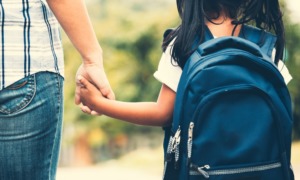Last year’s slaughter at Columbine High School hasn’t been the unifying Pearl Harbor Day for youth violence prevention that most Americans had hoped for. Marking the anniversary the president wrote, “Today America stands together as one to keep faith with all those who lost their lives at Columbine,” a claim of national solidarity at odds with the contours of the campaign to replace Bill Clinton in the Oval Office. Last year, 4,205 children and teens were killed by gunfire. A recent poll found that 75 percent of women and 53 percent of men favor stricter controls over the estimated 200 million guns in private hands. Those are potent numbers during an election year, but hardly qualify as a “standing together as one.”
Without a doubt, Columbine and the staccato bursts of rampage killings, which are a regular feature of national life, have mobilized new allies and strengthened old ones in the growing campaign against lethal violence that often involves young people.
Now at center stage is the Million Mom March, which has caught the attention of moms and friends of moms, who hope to assemble a million people in two dozen cities on Mother’s Day. That effort builds not just on tragedies from Jonesboro, Ark., to Mt. Morris Township, Mich., but on decades of often thankless toil by thousands of local groups, including many in the youth field.
The nation has not lacked in creative responses to the Columbine tragedy and youth violence. These include the Gunrunners education program taught by disabled shooting victims (and sponsored by the U.S. Wheelchair Sports Fund), the Denver-based SAFE Students, Miami’s Non-Violence Project, New York’s Resolving Conflict Creatively Program and the national “freedom from gun trauma” Bell Campaign.
Sensible peace-making efforts like these are slowly yielding gratifying results. The percent of kids who worry “a lot” about being a crime victim fell over five years from 12 to six percent, says a recent New York Times poll. The average daily toll of violent deaths of children has dropped since its peak in 1992 from 13 to a still-horrifying 12. These overall trends in youth violence prevention are ones in which youth work, along with law enforcement, can take pride.
Still missing from this improving picture is enough voter willpower to stiffen the political backbone of public office-holders to keep guns out of the hands of children.































